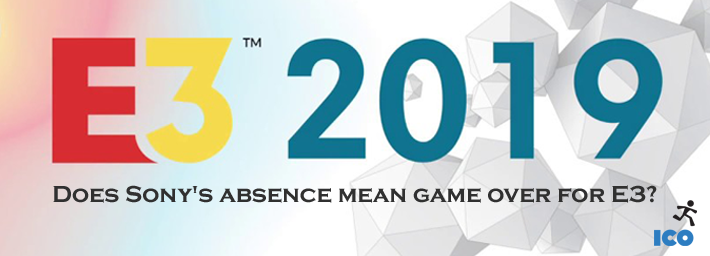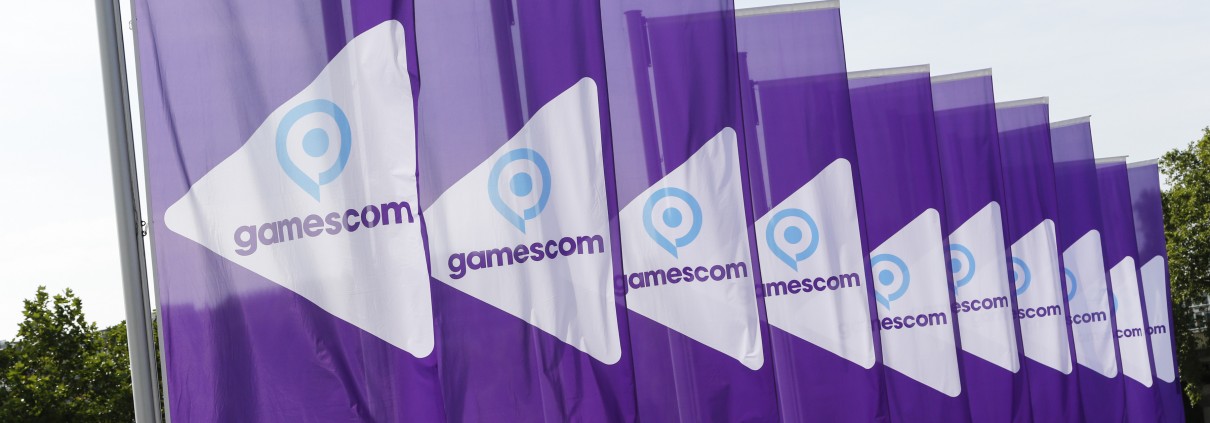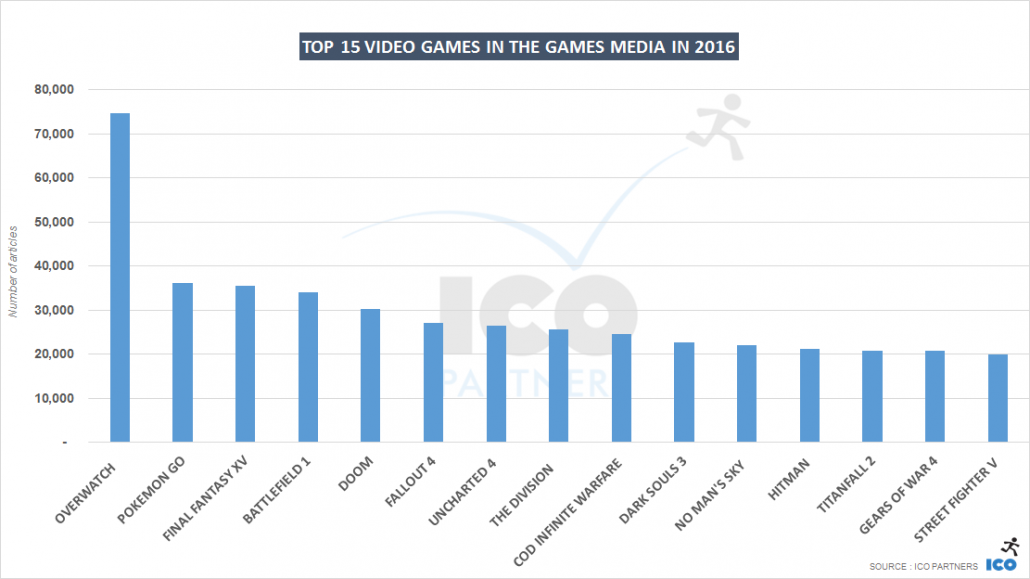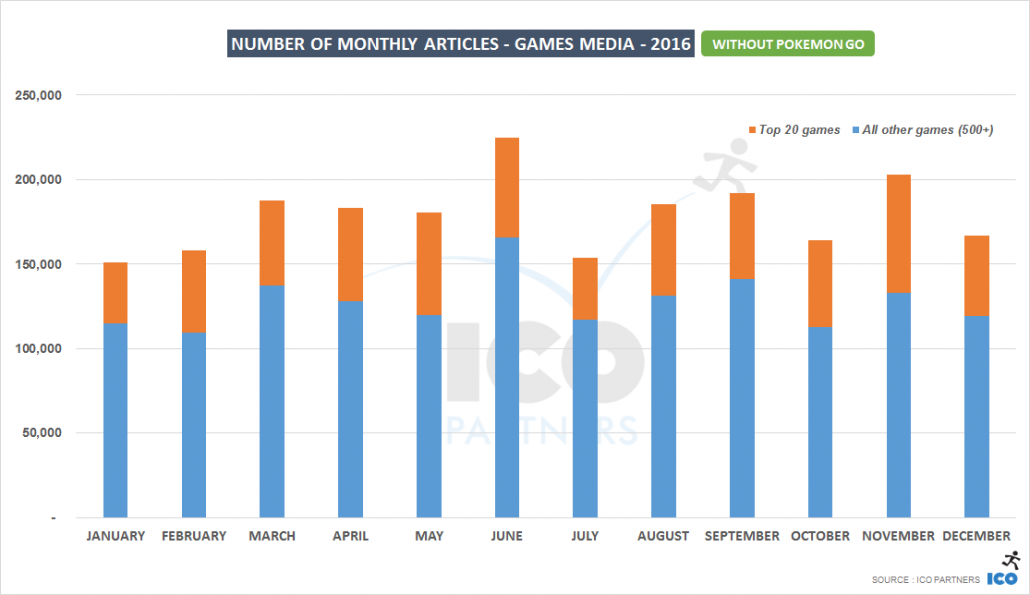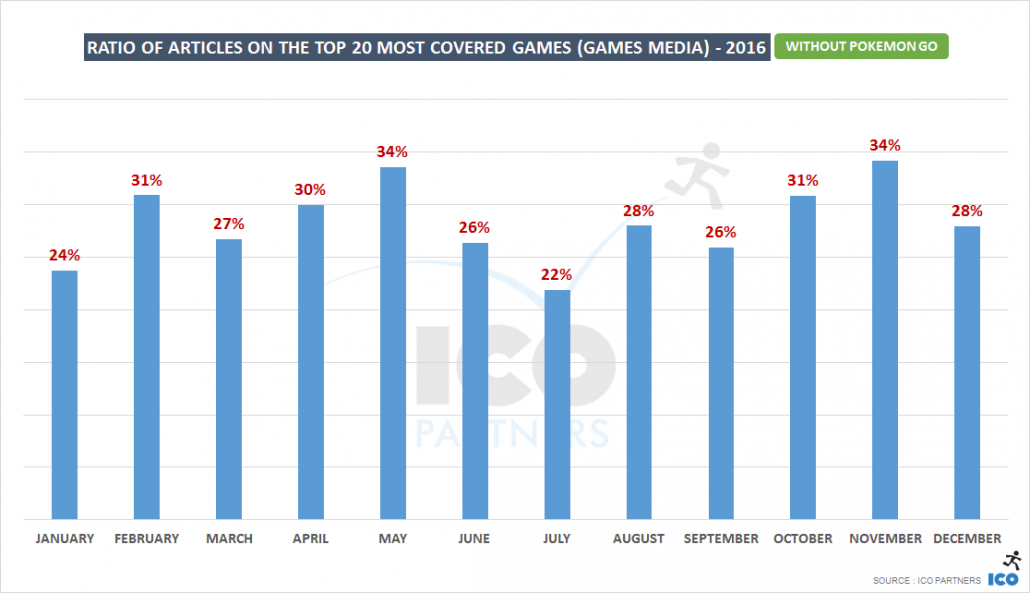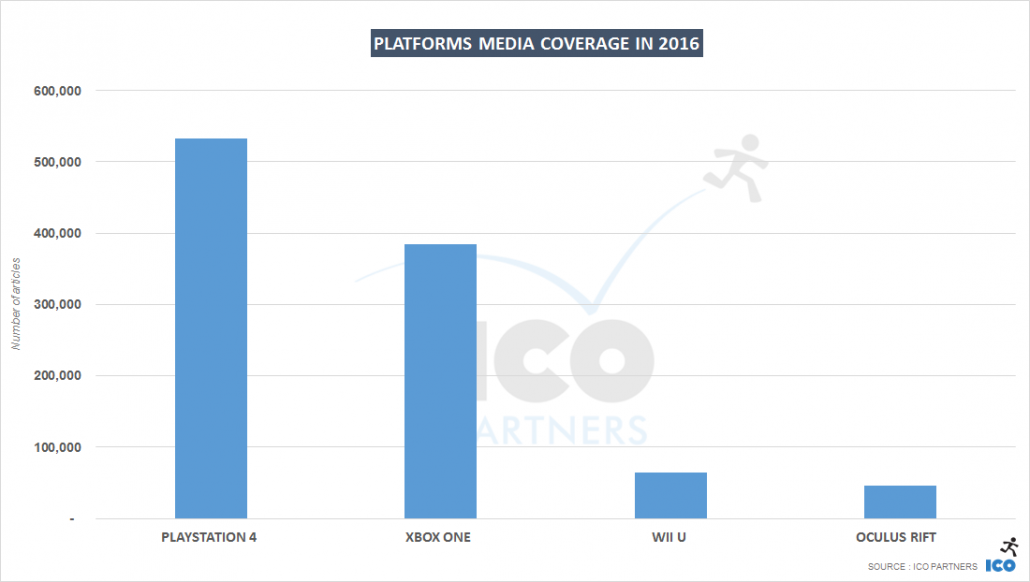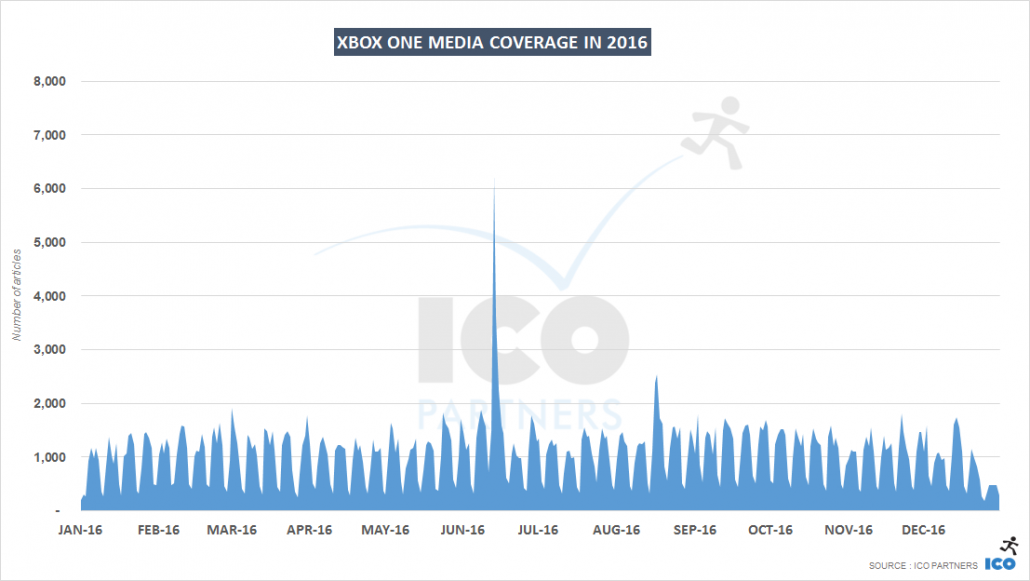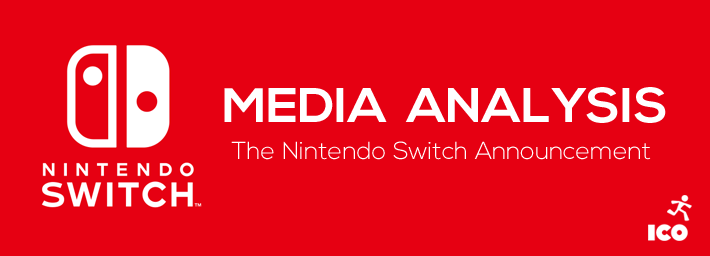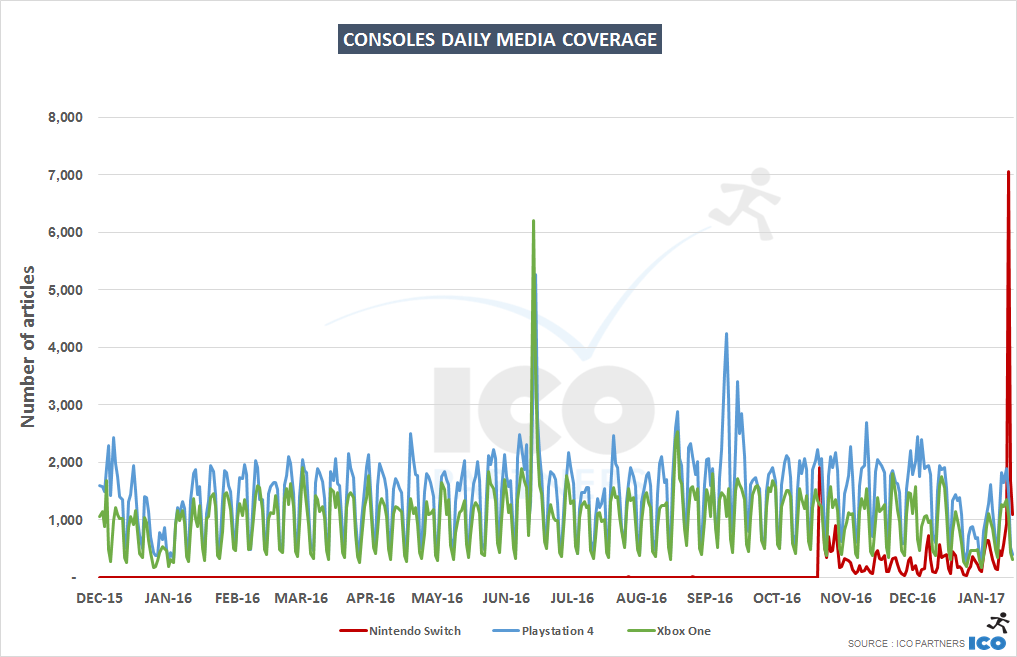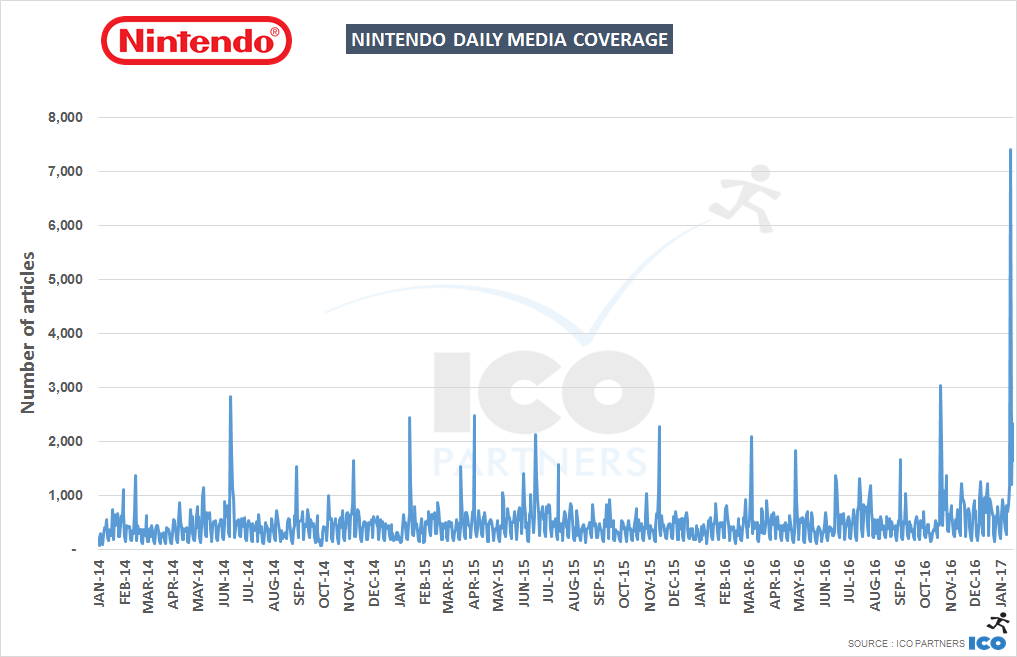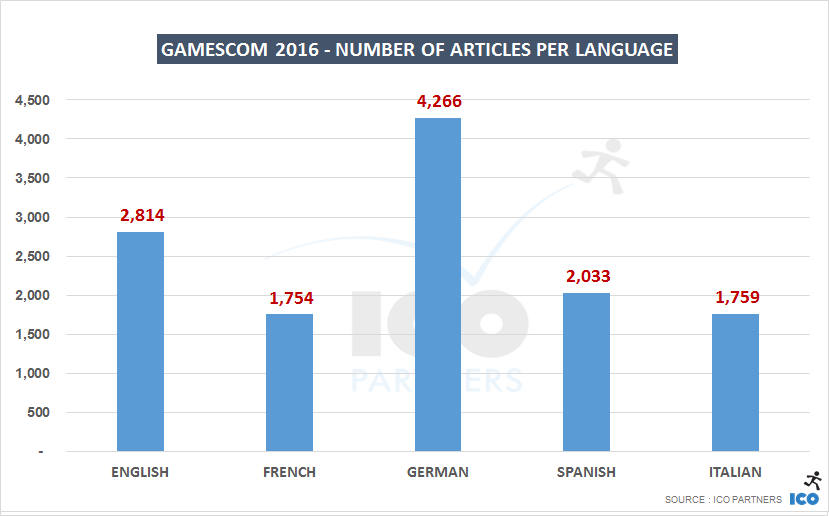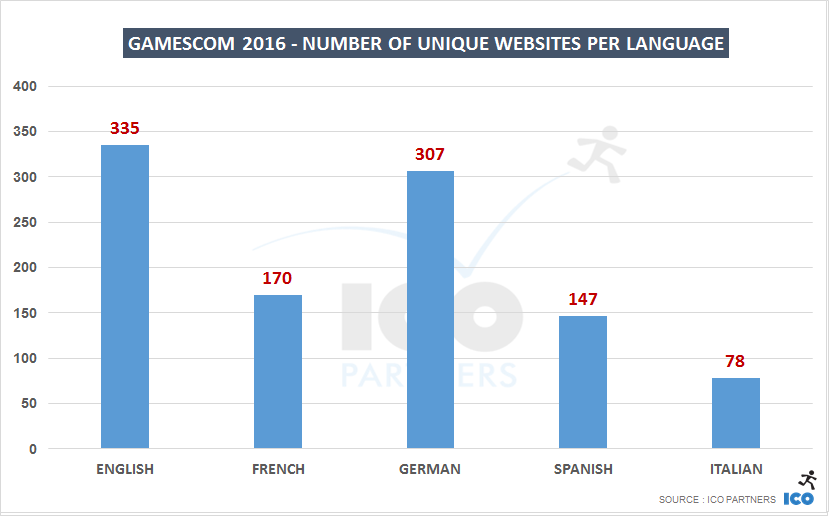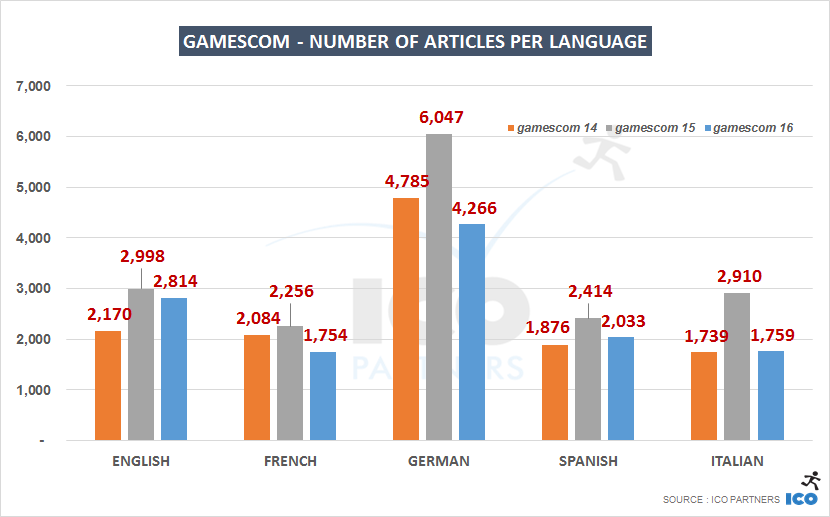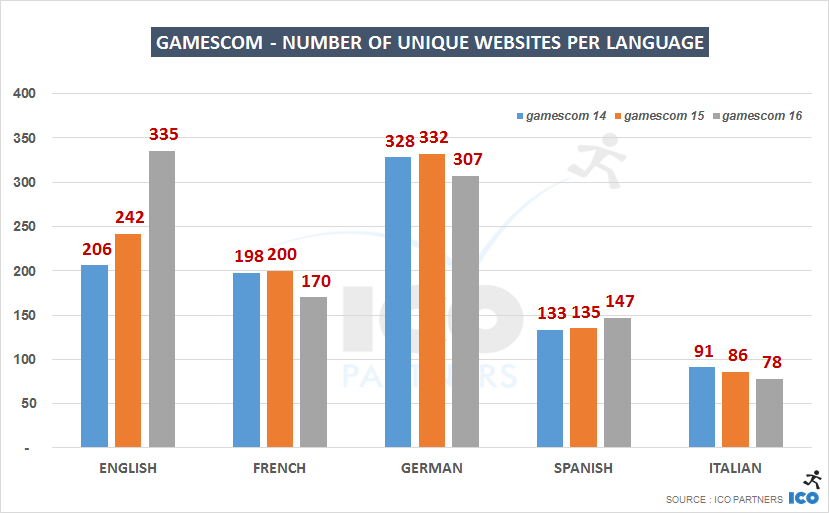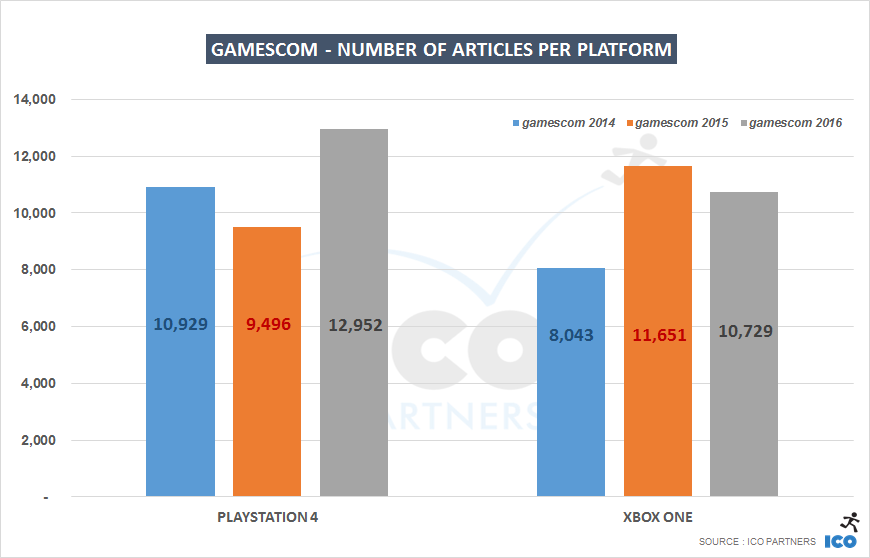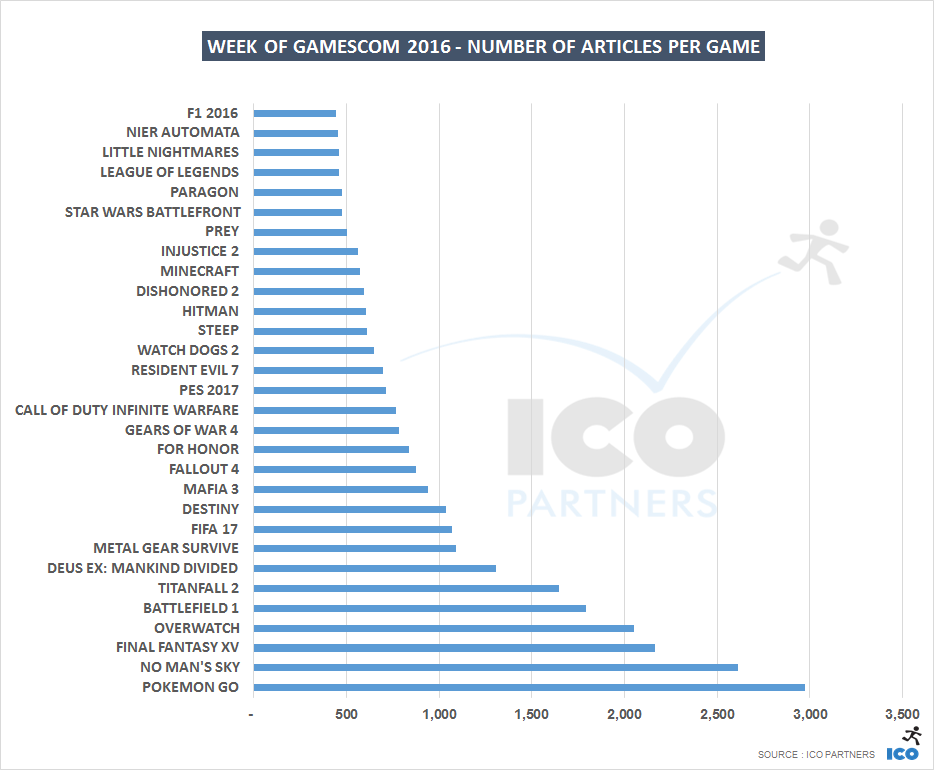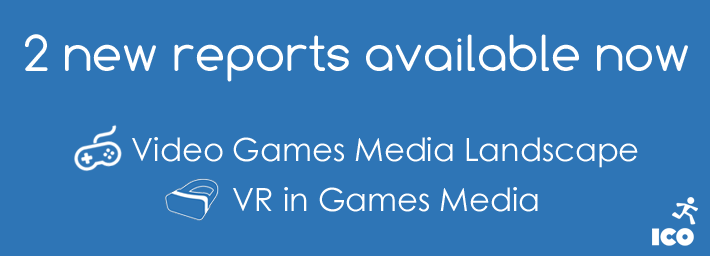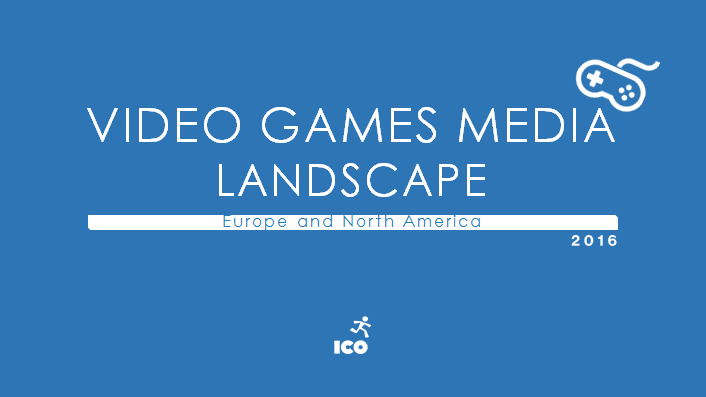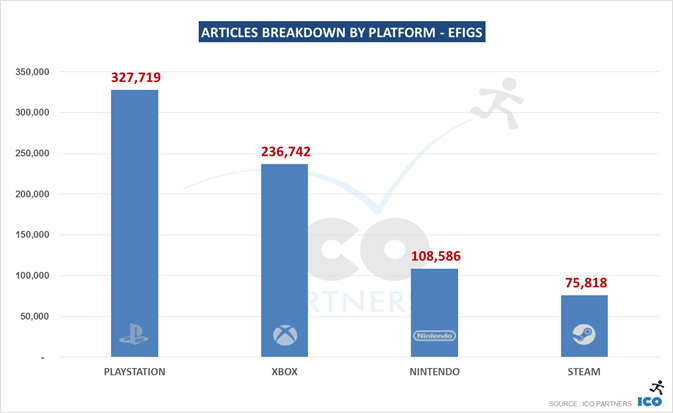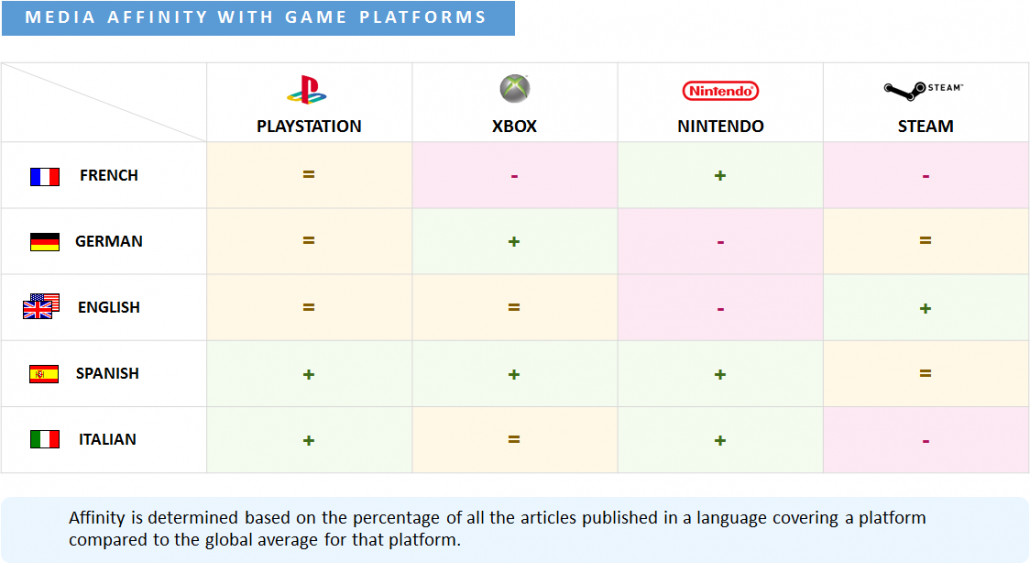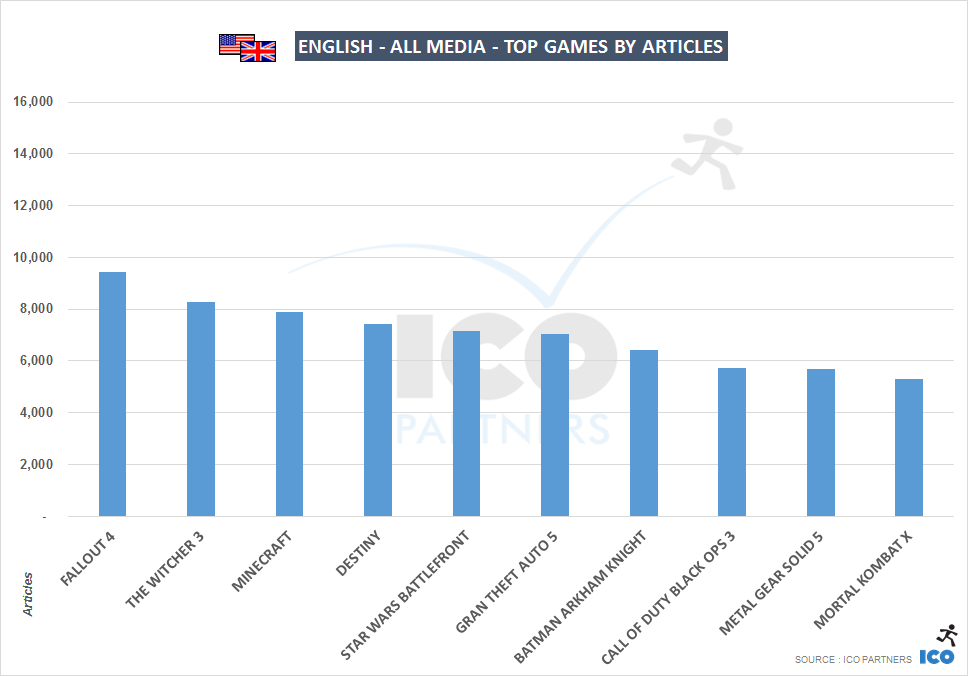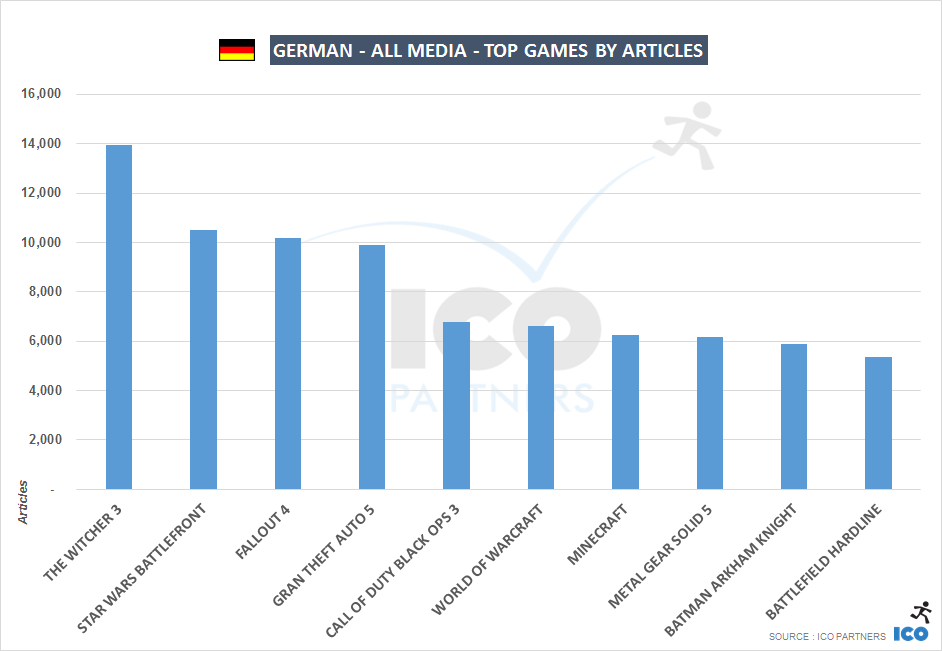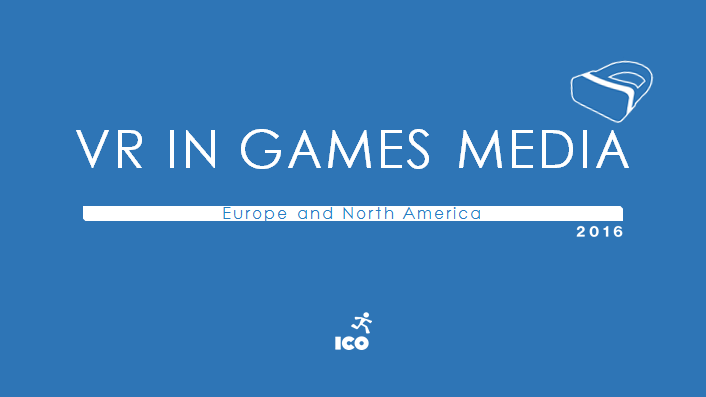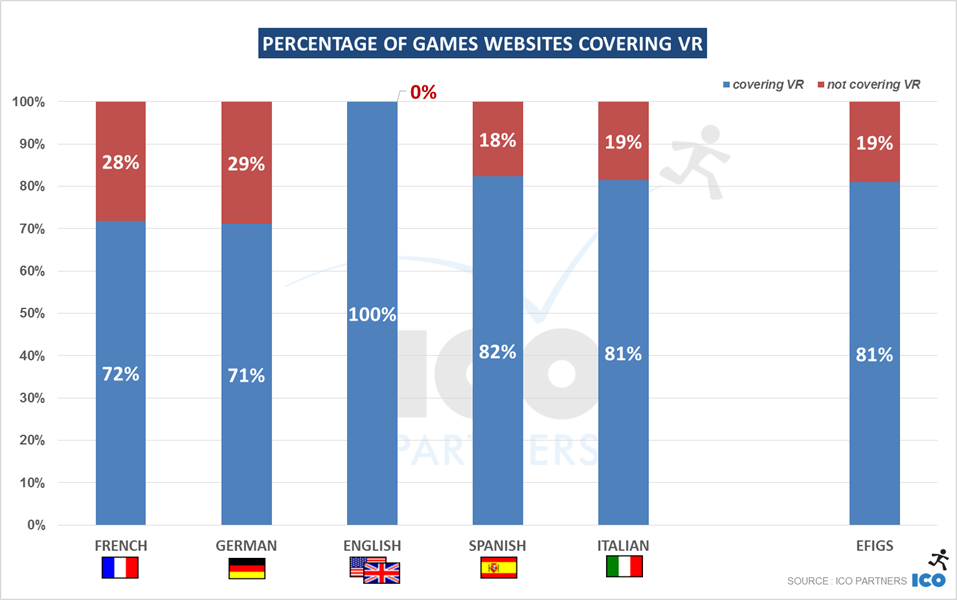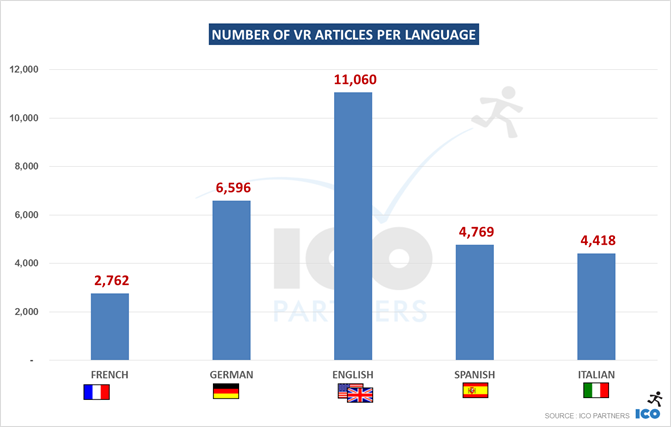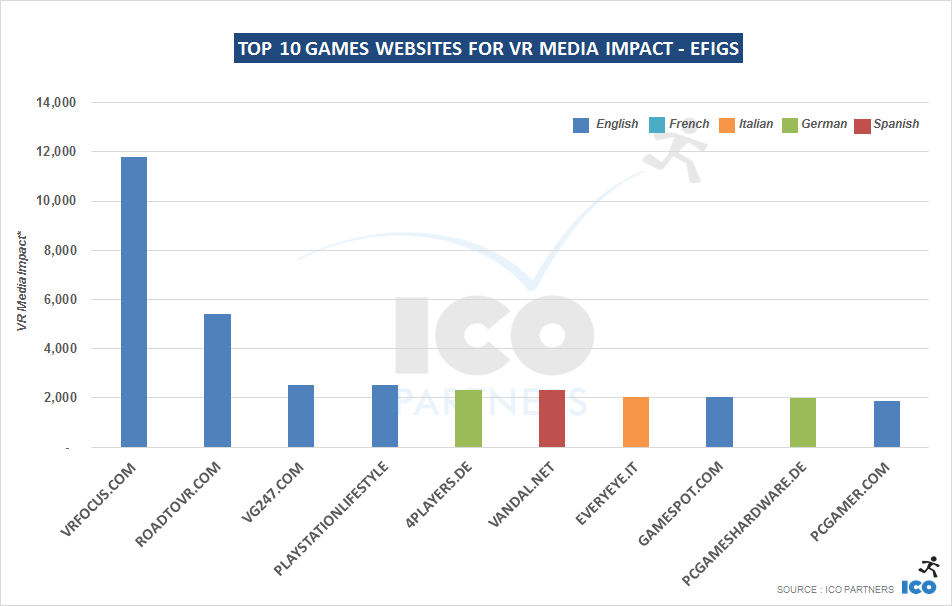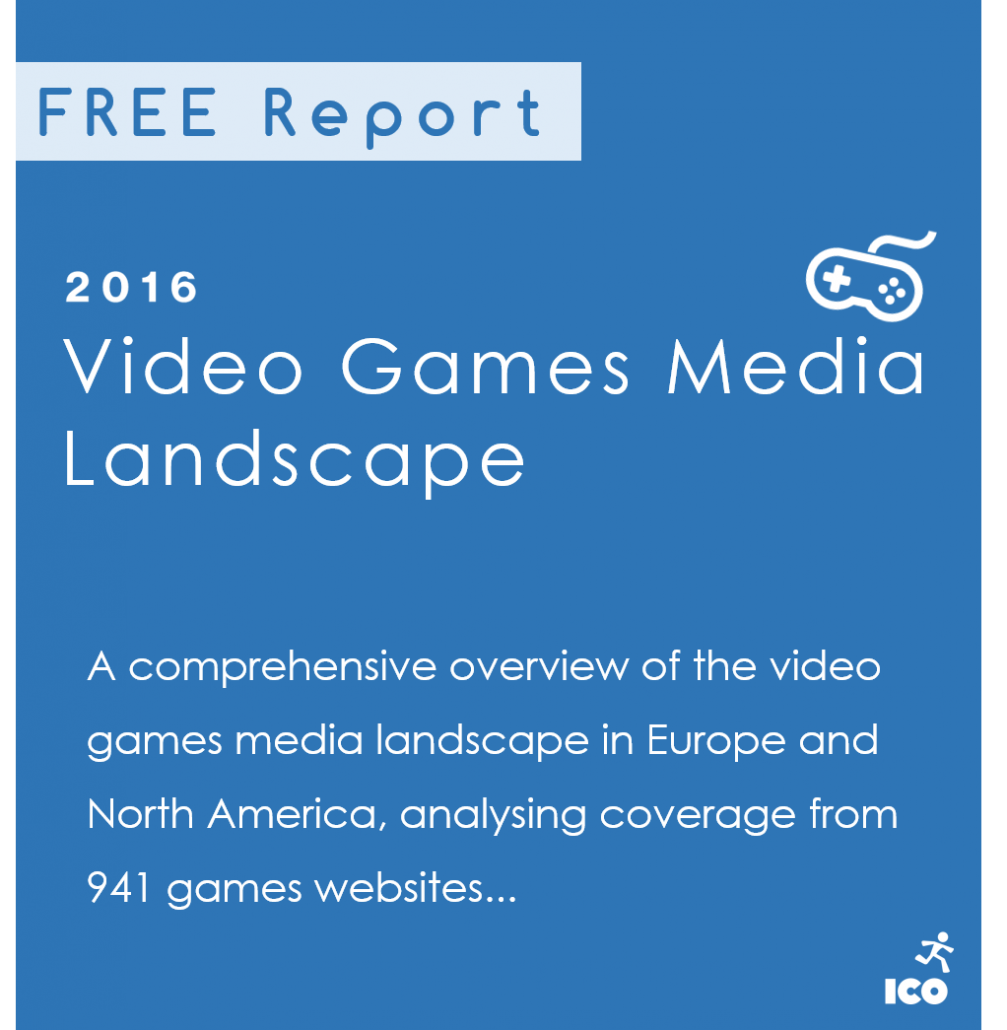The dust has settled on E3 2019, and it’s time for me to grab my Excel and run the coverage numbers from this year’s show. Read more
Posts
This is the yearly look at what is the most important game event in Europe, and the coverage it has generated around its latest edition. Read more
To complete the usual series of blog posts reviewing the past year, I present to you 2016 and video games in the media.
Like last year, bear in mind that we are using our internal tool to collect these numbers, and understanding the methodology is important. It is particularly worth mentioning this year Pokemon Go is definitely making things crazy. Or crazier than usual I should say. In order to account for that, a lot of the numbers presented here are limited to video games media. We do have General Interest and Tech media in our tools, but they are not as exhaustively collected on our end.
Games
Let’s address Pokemon Go now. I wrote about the game shortly after the launch, and while things have calmed down since July, the game is still receiving an impressive amount of coverage daily, even at times where there is no new update to discuss.
This being said, it wasn’t the number one game mentioned in the games media (important to be specific here), that was Overwatch.
Pokemon Go, while announced in September 2015, received very little coverage until it launched in early July 2016. The amount of coverage collected here is basically only 6 months worth, where Overwatch was already well covered prior to its launch in May.
If we compare these numbers to the ones from last year (which take into account a wider range of types of media), Pokemon Go’s performance is striking as it is a Nintendo game (only Splatoon managed to barely get in the top 15) and a mobile game (there were none in that ranking in 2015).
Overwatch is also impressive as it had 50% more coverage than any game in 2015. The online nature of the game, with its constant updates, coupled with the power of the Blizzard brand, pushed the game to the top here, making it by far the game with the most media presence in 2016.
Overwatch is also striking in the sense that it is one of the only two new IPs in this ranking (The Division being part of the Tom Clancy’s franchise), alongside No Man’s Sky. Many industry commenters pointed to No Man’s Sky’s hype as being the main reason for its fall from grace, and you have to give them credit here, when you see the game is in the top 15 most covered by media game of the year, while coming from a small independent studio. Even the Sony PR machine can’t be the only thing at play here, as many very large productions didn’t manage to make it in these rankings. The game’s hype took on a life of its own, and got big.
For the fans of the respective series, it will interesting to note that Battlefield 1 secured about +40% more coverage than this year’s Call of Duty game. Year-on-year, Call of Duty’s media coverage dropped about -12%.
Monthly Data
For a very long time, we wanted to run these numbers. As ICO is also a PR agency, a lot of the discussions with the studios and the publishers come around to the best timing to do a particular communication. The above is a great way to understand when certain periods are swamped, while some are on the contrary very light.
You’ll see that I removed Pokemon Go from the data. The game was so dominant at its launch that it was skewing the data (more than 7% of the articles in the games media in July 2016 mentioned Pokemon Go). Removing it is not a perfect solution either, but it draws a slightly better picture.
There are different ways to understand these numbers, but here are my takeaways:
- You probably want to communicate when the ratio of articles for AAA is lower. It means the coverage is more varied and more likely to be covering your game. From that perspective, November is often deemed a tough month for communications, and both graphs illustrate this well.
- When there is a lot of coverage, you also have more chances to be covered, however, the communication will also stand out less as higher volume of articles means more noise overall. In that sense, communicating during the E3 period (June) can be a blessing and a curse at the same time.
- While media coverage does drop during the Christmas period, it is the only time in the year where there is a visible drop in the volume of coverage across all media. It means that any other time, there will always be a minimum number of articles that need to be written, and it can pay off to aim for the periods outside of the AAA games releases, like January or July.
While making these graphs, the question came up about the number of games beyond those top 20 games. The truth is, we don’t know how many games communicate in any given month. We do know how many games are released on Steam on average, and this is where the 500+ number comes from. In reality, you can expect all the games releasing to have some form of communication that month, but you would also need to add all the games that are announced, the games that are communicating about their upcoming release, the released games having some newsworthy announcement, like an expansion, or a DLC release, not to mention the live games with significant updates.
That 500+ figure for games is quite conservative in truth.
Platforms
2016 was interesting as far as platforms are concerned. While there were no new console coming out, there were upgrades, iterations and major accessories announced and released. The Playstation 4 and the Xbox One are hitting their stride while the Wii U is in its last year being the main console for the Nintendo line up, with the Switch being around the corner.
What is interesting in the media coverage is the fact that it was yet again a strong year for the Playstation 4, with even more media coverage than in 2015 (+14%). The console has established its lead, the media follow the trend. The PlayStation VR and the Playstation 4 Pro both helped bring the device in front of the media as well.
For Xbox One, it was also a good year compared to 2015 (+18%), a growth in coverage not necessarily being a given considering the most important announcement, Project Scorpio, related to a new version of the console to be released in 2017.
The Wii U year-on-year numbers see a steep decline overall (-24%). Comparing it to the Oculus Rift, which is a niche platform that had its first release in the year both shows how much Oculus has accomplished, and how much the Wii U has dropped.
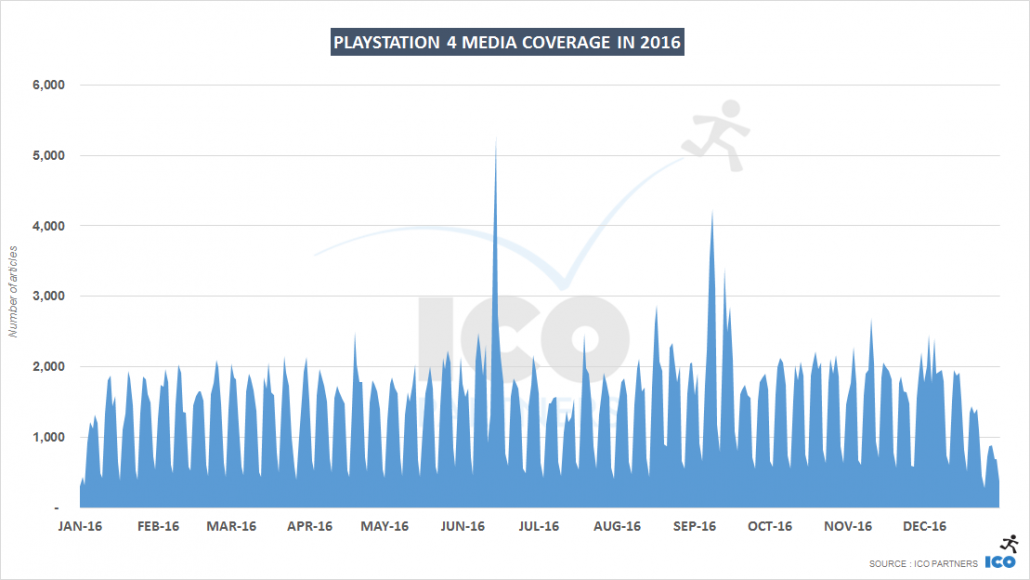
Sony’s communication strategy is well established by now, with most of its coverage originating from E3 and a combination of their own events and industry conferences.
gamescom, despite the absence of a press conference, is still an important source of coverage overall, but it does come after the press event ahead of the Tokyo Game Show.
And like last year, the Playstation Experience event in early December was a tremendous success for Sony as far as media coverage is concerned.
The Microsoft coverage over the year has fewer events sparking spikes in coverage. The two most notable ones are the E3 in June, and gamescom in August, even though, like Sony, they didn’t put a press conference together in 2016.
Microsoft seemed to be on the defensive in its communication strategy the whole of 2016 and the fact it still managed to grow the coverage is a good sign. Hopefully they will be more aggressive this year, with the Project Scorpio device coming, to shake things up a bit.
Back in October, I did an analysis of the announcement of the Nintendo Switch. It was a rather short one, with very few details shared at the time, with the promise of a more in depth presentation following an event in January. That event was last week, and now is a great time to look at how it went for the Nintendo teams.
The Console
There is no question that, of the three console manufacturers, currently Nintendo is lagging behind Sony and Microsoft and that is very apparent when looking at the media coverage of each console.
In the video games media landscape report that we shared last year, Nintendo received less than a third of the articles that PlayStation had. In that respect, the Switch announcement seems to have been fairly well covered. We are lacking data to compare it with other console announcements, though.
Here is another graph to illustrate how significant the event was for Nintendo’s coverage:
While it is not surprising that the main event showcasing a new console is the single biggest media event for Nintendo in the past 3 years, the scale it reached is significant. It is the single biggest announcement in terms of volume of coverage across all 3 main consoles for that period of time. For Nintendo, a company that is struggling to compete with the media attention its two contenders receive, it looks like a massive achievement.
And with the new cycle of consoles being upgrades from the current gen, rather than brand new iterations, this might stay true for a while for all we know.
Games
* Minecraft numbers are only for articles explicitly naming the Switch and Minecraft.
Looking at the games announced at last week’s event, there seems to be 4 categories:
- Zelda is alone in the lead, with twice as many articles as any other games. Nothing surprising here: it was the crown jewel of the line-up, the game that was playable on-site, and it’s the one key launch title for the console. It is interesting to note though that it is garnering even more coverage than at last E3, where it was one of the leading game in terms of coverage (2,300 articles over a week compared to 2,600 articles since Friday)
- Nintendo’s first party titles – they benefited from the full support of the firm’s communication effort. It’s also interesting to note that existing licences are performing better than the new brands. This is very normal of course, but interesting to actually see it in numbers.
- 3rd party titles from key Japanese licences – I put in this bucket Bomberman, Fire Emblem and Xenoblade, that all received 400+ articles from the event.
- Other 3rd party titles – this is of course more varied and spread out, but I think it’s worth noting Snipperclips and Octopath both securing more than 200 articles – no small feat for projects with their profiles.
That’s it for me (for now).
I haven’t recovered (yet) from this year’s gamescom, but I would rather do the customary media coverage analysis blog post while it is still fresh.
If you are so inclined you can read the 2014 and 2015 posts, but I will be comparing previous years to make it easier. The methodology is the same (data is from Sunday to Sunday, across all the media we track).
gamescom 2016
Let’s review the specifics of this year edition.
Dates
The dates changed again, getting closer to the middle of the month compared to last year’s. This year the dates were more “normal” as far as gamescom is concerned, starting on the 17th and closing on the 21st of August.
No press conference from either Sony or Microsoft
Last year Sony did not put together a press conference, leaving the field free for Microsoft. This year Sony again skipped the once traditional Press event at gamescom, and Microsoft has followed their example. While I can see the logic behind Sony’s move, after all they have many other events in lieu of the gamescom for their communication if they follow last year’s pattern, Microsoft hasn’t structured its communication that way in the past, and they haven’t announced anything to make up for the lack of a press event in Cologne.
Last year Sony used the Paris Games Week as its European press event, but there hasn’t been any announcement so far in that regard for 2016. They do have a new event called the PlayStation Meeting in early September, which I will keep an eye on for sure.
Numbers
Here are the gamescom 2016 numbers, as released by the organisers:
- 345,000 visitors (same as 2015)
- 30,500 trade visitors (-2,700 from 2015; -1,000 from 2014)
- 877 exhibitors (+71 from 2015)
The space was the same surface area as last year.
gamescom has reached an interesting size issue, where they can’t welcome more people. The tickets are sold out and there isn’t much more space in the Messe to expand too. There is also the issue that even if they want to have more space, there might not be much interest from exhibitors to expand further than what they currently have, and the companies not exhibiting probably have good reasons not to. I will talk about it at the end of the post, there are some changes coming that might help.
So. What about the media coverage?
gamescom in the media
So, I should preface this year’s analysis by a disclaimer that I don’t pretend to understand all the forces at a play where those numbers are concerned. Most of what you will find are educated guesses and I try to corroborate the theories with the data, but it doesn’t always work.
Here, we see a decline in the total coverage of the gamescom’s brand from last year. But while there was a significant drop, which was expected with the lack of major press conferences, it stayed at the same level as 2014, where there were two press conferences. So I would say that gamescom has reached a point where its relevance to the media (and the publishers and studios planning their communication strategy) has gone beyond the consoles’ press events, and it stands on its own.
As expected, a lot of the articles are coming from German media (this is where I plug our report on the media landscapes – you can download it for free and it can give you a sense of the size of the media in the different languages). Nothing surprising yet there.
Looking at the number of unique websites mentioning gamescom, we find a different result though… There were more English websites than German websites covering the event (keep in mind that most of our database is very much games websites, there are plenty of General Interest media that we don’t track properly).
So, looking at the past 3 years, we can see that in every language, there were more articles last year than in the 2016 edition. It all makes sense. The year-on-year drop can be more or less drastic depending on the language. In French and German, it goes below the 2014 level for instance. But looking at the number of unique websites covering gamescom in English, there is a significant growth over the past 3 years, to the point that they are actually more websites in English covering gamescom, than German ones (again, in our sample).
English media were probably a bit behind the other ones in taking into account gamescom as a major industry event. It seems that this year, they have caught up, and they have increased their coverage of the event considerably. That’s impressive considering that it happened without the support of any major press conference.
Platforms
Looking at the articles mentioning the platforms during the week of gamescom, the slight drop in articles on the Xbox One was to be expected with no press conference this year. The VR platforms all saw more coverage, with the PlayStation VR taking the spotlight this year.
What is really fascinating, is the significant uptake that the PlayStation 4 had. To put it in context, this is the coverage that the Playstation 4 and the Xbox One had over the past three gamescoms:
This year was the best for the PS4 presence in the media since we started tracking the data. After looking more in depth, I don’t have one single explanation for this though, but I can offer the ones I have and some that were suggested to me:
- PlayStation VR. We know that PSVR had a very significant effect, but in the best case, it can only account to half of the extra coverage.
- Lack of Press Conferences. The absence of an Xbox press event meant that the attention bounced back to PlayStation from last year coverage. This is a good theory, especially when you consider the dominant position of PlayStation, even if the drop of the Xbox coverage, all things considered, is not that significant.
- Natural growth of gamescom coverage. We saw the significant bump in the English media covering gamescom, there might be a side effect here where that benefited PlayStation in some ways. As we are looking at two different data sets, there might be a growth of the PlayStation coverage from the additional visibility that doesn’t necessarily mention gamescom.
- Specific games. There are few games that seem to emerge supporting this theory. There is a little bit of extra coverage thanks to No Man’s Sky, and there is also some coverage specifically discussing Titanfall 2 coming to PlayStation 4 after the exclusivity of the first iteration on Xbox One. But in both cases, this seems very limited in volume.
For the sake of completion, here are a few things we know are not related to the increase:
- PlayStation 4 Slim edition. The rumours only started to show up online in a significant way on the last day of gamescom, a Sunday, and the volume is quite low.
- PlayStation Now coming to PC. The announcements (and its coverage) only started the following week.
If you have another theory, please let me know on Twitter, I am quite keen to hear your ideas as I might have missed something obvious here. For the moment, I think this is a combination of those factors that took PlayStation to its excellent media coverage this year.
Comparing E3 and gamescom
This year’s E3 saw very strong media coverage across the different platforms. In the case of the PlayStation 4, the growth in the media coverage at gamescom (+36% from last year) is triple the one it had at E3 (+12% from last year). For the Xbox One, we see a slight drop at gamescom (-8% from last year) against a significant growth at E3 (+21% from last year). It has to be noted that Microsoft presence at this year’s gamescom was quite timid. Its booth was significantly smaller than the previous year from what I could tell (couldn’t find a proper floor plan of the consumer halls), especially compared to Sony’s (it was probably 6 to 8 times bigger).
It seems to me that Microsoft backed out of gamescom more strongly than Sony, and the discrepancy in the media coverage is showing it.
On the other platforms, I want to specifically mention the Oculus Rift. Year-on-Year, its E3 media coverage increased +18% against a +95% increase for its gamescom coverage. In both cases, the device is now available compared to the previous year, but Oculus seems to have managed to come across to the media at gamescom much more efficiently than the previous year, with media coverage at the same level as its E3 coverage.
Games
Again, I picked the top 30 games in terms of coverage during the week of gamescom.
A few things that stood out for me:
- Pokemon Go and No Man’s Sky both are here despite having no specific announcement at gamescom. They just happen to be the hype-of-the-month, and it is as such a scale that they both take the top spots.
- Final Fantasy 15 is the third most mentioned game, but only partly because of its gamescom presence. The announcement of the delay early in the week is a significant part of the coverage of the game (and by far the biggest beat the game received).
- Overwatch had the double effect of announcing (and showing) a new map at gamescom AND the release of one of animated short movie (and an excellent one)
- Call of Duty PR machine is losing hard to its Battlefield nemesis this year. Also, very interesting to see that Titanfall 2 is also doing very well media wise.
- Little Nightmares was incredibly well covered for a game of that profile.
Concluding thoughts
I find the results of this year’s analysis are fascinating. I was going into it expecting to see some decline due to the lack of the big press events to support the media attention. And while there has been a decline in the total coverage mentioning gamescom, it was not drastic, and as far as the media attention on key game platforms, it certainly was a good week.
It seems that the event has grown to the point of developing an autonomy from the big press-only conferences, and has enough interest on site to stay relevant without them. Of course, all the key industry actors were there, and still supporting it, but until we see an exodus of such companies, gamescom seems to be now well and strongly positioned to be the most relevant game event in Europe when it comes to media, and is probably only second to E3 in the world.
Take notes for next year, and remember that the dates have changed again. It will at the same time of the year, but happening from Tuesday to Saturday instead of the traditional Wednesday to Sunday it has been at for years.
Today, we are releasing two new reports, both available from our website. These are our first public reports built using the data gathered using our media monitor and you can probably expect more like these two in the future.
The first report, which is free (you can make a donation when you get it on Gumroad, if you do, we won’t mind), is a look at the overall landscape of those media that are dedicated to video games.
The second report, which is not free, is a deeper and more specific look at video games media and their coverage of VR, focusing on the key platforms (Oculus Rift, HTC Vive and PlayStation VR), the mist VR-friendly media, and the key VR games that were covered.
Rather than describing them, let me share some of the findings of the reports.
Video Games Media Landscape
One of the things the report looks specifically at is the coverage received by the major gaming platforms over a year.
There are two things we considered when looking at the relative media presence of those platforms.
First, the percentage of websites that mentioned the platform at all.
There are two very clear leaders, with both Xbox and PlayStation having 95+% of the games websites mentioning them. The main consoles are so ubiquitous that it is surprising that they aren’t at 100%, to be honest. But you have to account for PC-only media as well, and they are unlikely to have much coverage of the consoles.
More surprising is how Steam, which is not a platform that has a very pro-active communication strategy, still has 90% of the websites mentioning it. This is ahead of the Nintendo platforms (Wii, Wii U, 3DS) standing at 86%.
Then, beyond the websites, we also looked at the volume of articles for each platform:
If you are familiar to the blog, you won’t be surprised to see PlayStation ahead here. They have a very strong media presence, and they are constantly ahead of the other platforms in terms of media coverage. In terms of scale, that’s still 3 times the total number of articles mentioning the Nintendo brands, and almost 30% more than the volume of articles mentioning the Xbox brand.
Steam being behind matches with what we were referring to earlier, and the lack of a concerted communication strategy on the platform from Valve. Much of the coverage is inherited from studios and publishers launching their game on the platform, and without consideration for the brand presence.
One objective of the report is to provide some reference points in regards to how different the media from the different countries are a different from one another. We are able to put together this table to show what we called the “media affinity” for certain platforms based on the language of a website.
One very interesting pattern is how French, Spanish and Italian media, all based in Mediterranean countries, have a stronger affinity to Nintendo platforms compared to websites in German or English.
This is not to be interpreted, for instance, French websites having more coverage on the Nintendo consoles than on the Xbox ones. But in proportion, French media are writing more articles on Nintendo than the German media. I think this is an important consideration – as this helps understand the different sensibilities of the different cultures when it comes to games platforms.
Here is another very telling example. Below are the top 10 games in terms of media coverage in English and in German, for the calendar year 2015, set at the same scale.
We discussed in the past how The Witcher 3 was the most mentioned game of 2015, across all the languages we track. But in English it only came second, behind Fallout 4. In German, The Witcher 3 is the clear winner with a third more coverage than the second best game… Star Wars Battlefront!
Another interesting takeaway is the very strong media coverage in German for World of Warcraft. The game doesn’t make it to the top 10 in any other language. World of Warcraft had more articles in German than Metal Gear Solid 5 had in English.
We made the landscape report free to anyone, you just need to enter your email and ask for a download link. We wanted this report to serve as a foundation for other reports we are writing, and making it free allows us to use it as a reference points across different things we are building.
Virtual Reality in games media
Our second report is more in-depth, is not free, and is looking into the media coverage of one of this year’s strongest trends, Virtual Reality. This report is also covering a full 12 months of coverage, from May 2015 to April 2016.
One of our findings was done by looking at the ratio of websites that covered VR in some way, compared to the ones that didn’t cover the topic at all.
The criteria being very generous (any mention of VR or a VR related device), we were expecting very high percentages. We found two things we didn’t expect:
- 100% of the English websites we track mentioned VR in a way or another during the 12 months period. It is very unusual to have such a perfect score, especially considering the tool has it own flaws, and it would tend more towards missing mentions rather than finding false positives. VR as a topic for video games English media is there and is very strong.
- More than 25% of both French and German media didn’t cover VR in any way during the period. That’s significantly behind the average observed, especially considering the very generous criteria we used there.
Looking at the volume of content shows another different trend.
VR as a topic is incredibly weak among the French video games media. They saw fewer articles than in any other languages. While the percentage of German media covering media is the lowest, the ones that did cover VR wrote more than 6,000 articles referring to it. This is still a lot lower than the total number of games articles in English and highlights the fact that, at the moment, VR as a topic for video games media is a higher priority for English media than for the others studied.
We put together a formula called “VR Media Impact” to help us identify the most enthusiastic and influential websites about VR. We took into account the number of articles about VR and the popularity of the websites (based on its Alexa ranking):
There is a clear majority of English websites (and lack of French media), but tellingly, the top 2 media are dedicated to VR. For them to appear here is not only based on the fact they have written a lot on the topic, but also speaks to the fact that they managed to build an audience and have a strong enough following.
The report has more detailed ranking for each language if you are involved in the VR scene and would like to see more.
Lastly, I wanted to show how the coverage for the key 3 VR HMDs (Head Mounted Devices) has evolved over those 12 months.
All 3 platforms are trending towards more coverage overall. However, while Oculus is leading the way most months, it is slowly losing its lead. Playstation VR secured more coverage in March 2016, where it announced its release date and pricing, showing promise for when it releases towards the end of the year.
It is also very interesting to note the slow but steady growth of the HTC Vive media coverage. The lead in brand awareness that Oculus built over the years probably helped in getting good coverage for the important announcement, but the HTC Vive is now catching up to it, with the media at least.

